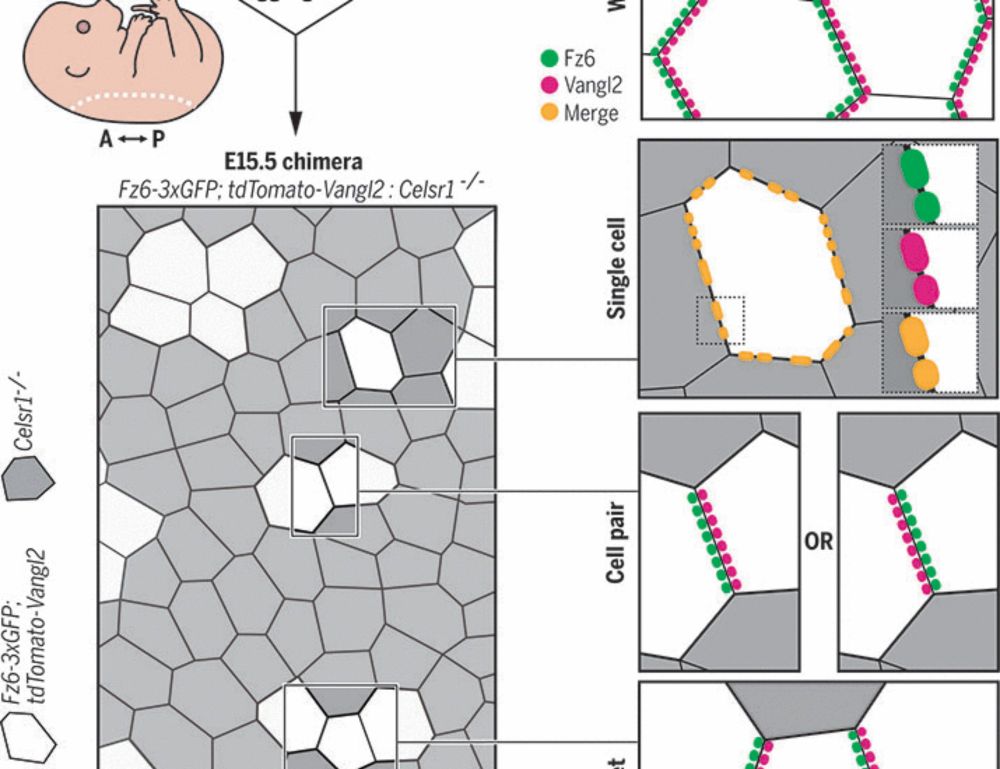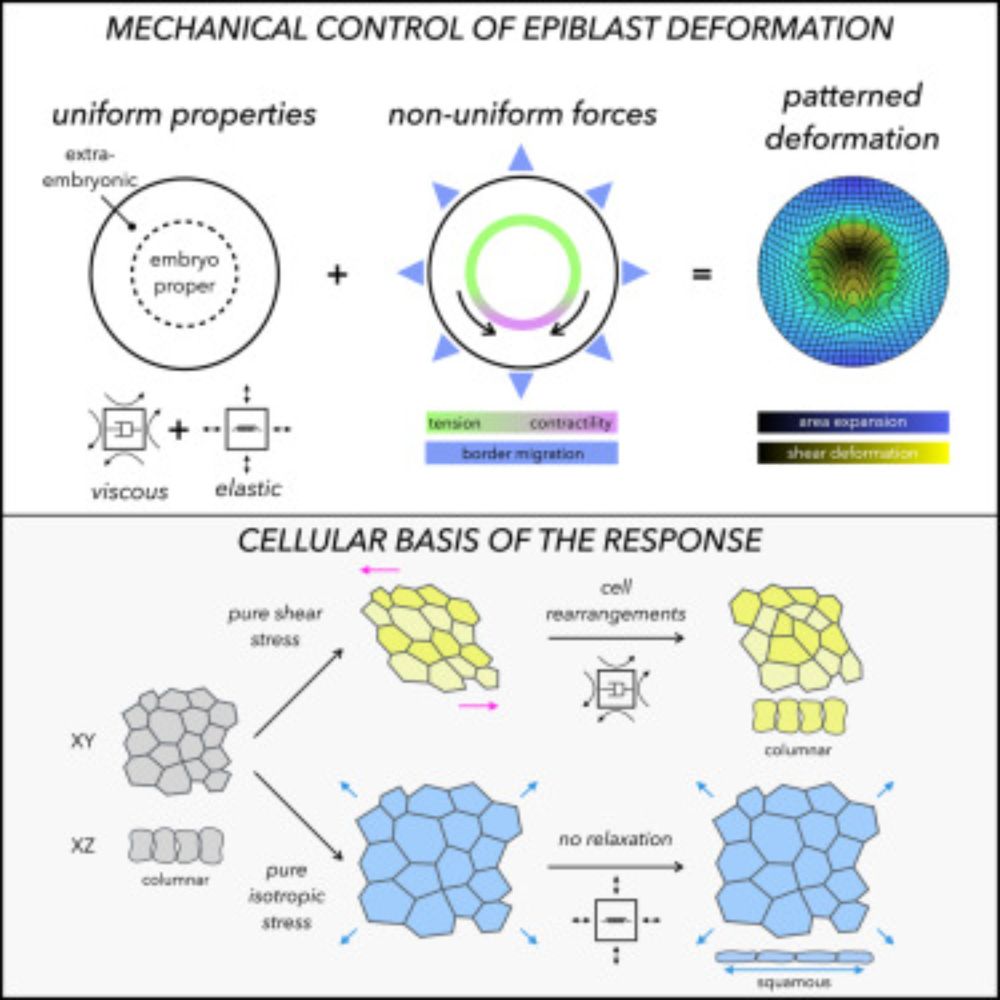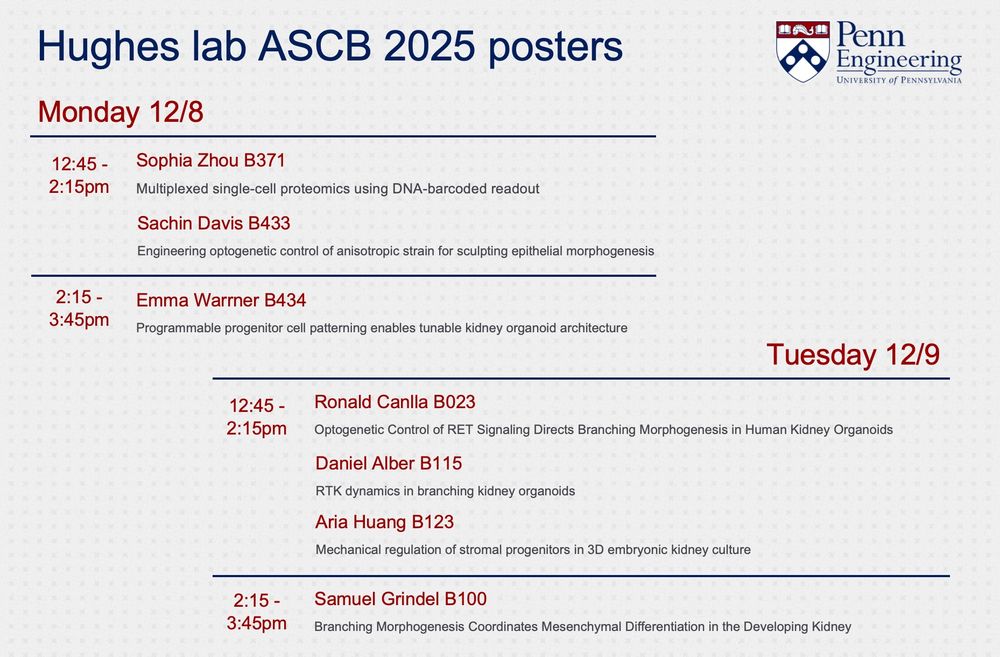
if you are attending #CellBio2025 please check out the posters from our lab @hugheslabpenn.bsky.social. The lab will have a great showing this year featuring my talented colleagues @lsprahl.bsky.social @danielalber.bsky.social and many others!
07.12.2025 16:42 — 👍 9 🔁 5 💬 0 📌 1
See this? This = implanting mouse embryo. Usually this happens inside its mother and is invisible to us, but we can actually watch implantation ex vivo with the hope of understanding why implantation goes awry in embryos of older women. A 🧵...
01.10.2025 18:20 — 👍 223 🔁 68 💬 11 📌 18
How do cells navigate up gradients of adhesive proteins?
🤔
Termed "Haptotaxis", this effect is ubiquitous in cell migration, but it's mechanism was poorly understood
We show that passive friction directs cells & explains complex trajectories on gradients
👉 www.nature.com/articles/s41...
27.09.2025 08:48 — 👍 75 🔁 26 💬 1 📌 2
🧵1/14 Preprint thread! Can we predict a cell’s fate based on its dynamics? 🔮 Our new study unveils a framework for watching development unfold in real-time, revealing how a cell's shape and movement encode info about its future fate. 🔬📄 Preprint: tinyurl.com/4shf8v4x
22.09.2025 09:37 — 👍 121 🔁 38 💬 8 📌 6

Peer pressure shapes the gut
International research team develops mechanical model to explain the shaping of the fruit fly hindgut by forces from neighbouring tissues
Peer pressure shapes the gut: latest publication in @pnas.org by @lepuslapis.bsky.social, @zhaoshh.bsky.social from @mpipks.bsky.social @mpi-cbg.de @csbdresden.bsky.social with colleagues from @flatironinstitute.org and Princeton University. www.mpi-cbg.de/news-outreac...
19.09.2025 10:29 — 👍 23 🔁 7 💬 1 📌 1
Now #published @pnas.org: "A model for boundary-driven tissue morphogenesis", a great #biophysics #devbio collaboration led by @danielalber.bsky.social @zhaoshh.bsky.social:
doi.org/10.1073/pnas.2505160122
@mpipks.bsky.social @mpi-cbg.de @csbdresden.bsky.social @flatironinstitute.org
19.09.2025 07:52 — 👍 38 🔁 12 💬 4 📌 0
📣 New preprint: Mechanochemical feedback, tissue geometry & rigid-body dynamics initiate rotational migration in Drosophila via spontaneous chiral symmetry breaking. A mechanism generalizable to closed epithelia.
@sreejithsanthosh.bsky.social
biorxiv.org/content/10.1...
19.09.2025 18:25 — 👍 69 🔁 16 💬 0 📌 0
BDM is pervasive in development but difficult to understand due to the necessity of incorporating multiple tissue deformations in their global context. We absorb these into simple and measurable parameters and provide both a model and model system to understand boundary-driven morphogenesis. (8/8)
18.09.2025 20:35 — 👍 2 🔁 0 💬 0 📌 0

Finally, we follow up the model's predictions by comparing phenotypes in genetic mutants lacking active behaviors by some of the neighboring tissues. We find that without a decrease in enclosed area or movement of the ring off of the posterior pole, it fails to break symmetry. (7/8)
18.09.2025 20:32 — 👍 1 🔁 0 💬 1 📌 0

We found that the hindgut deforms in two stages. The first involves uniform dilation and contraction of the rings. The second involves a rapid change in the shape (described by the rapid change in roundness, a shape metric) we explain in the model above. (6/8)
18.09.2025 20:32 — 👍 1 🔁 0 💬 1 📌 0
We then acquired a light sheet dataset and tracked each nucleus within the hindgut (~40,000 annotations for one embryo!) as it deformed. We constructed closed space curves, or "contours," that follow the movements of nuclei and mirror the minimal model's representation of the tissue. (5/8)
18.09.2025 20:32 — 👍 3 🔁 0 💬 1 📌 0

Using a minimal model, we found that neighbors moving the hindgut onto one side of the embryo and decreasing enclosed apical area is sufficient to drive the break in shape symmetry. The anisotropic curvature of the underlying surface results in the ring-to-keyhole transition. (4/8)
18.09.2025 20:32 — 👍 1 🔁 0 💬 1 📌 0

The hindgut itself deforms no less dramatically, quickly breaking shape symmetry and transforming from a circular ring to a triangular keyhole. Does the hindgut deform merely as a result of its neighbors? (3/8)
18.09.2025 20:32 — 👍 1 🔁 0 💬 1 📌 0

At the onset of gastrulation, the hindgut primordium is a ring of ~400 cells bordered by canonical examples of actively-deforming tissues such as the germ band (GB), ventral furrow, and posterior midgut (PMG). These neighbors deform either in-plane or out-of-plane. (2/8)
18.09.2025 20:32 — 👍 1 🔁 0 💬 1 📌 0
A ring of cells deforms into a triangular keyhole in just 15 minutes. Meet the hindgut, a model for boundary-driven morphogenesis!
Out now in @pnas.org at doi.org/10.1073/pnas... with @zhaoshh.bsky.social, Alex Jacinto, Eric Wieschaus, Stas Shvartsman, @lepuslapis.bsky.social (1/8)
18.09.2025 20:32 — 👍 68 🔁 22 💬 3 📌 1
Have you tried a workstation with more RAM and VRAM? We were getting similar issues with files corrupting which were resolved with more memory. Imaris will use more RAM than the raw file size. Unfortunately, no way I know of to salvage the corrupted files.
12.06.2025 15:50 — 👍 1 🔁 0 💬 1 📌 0
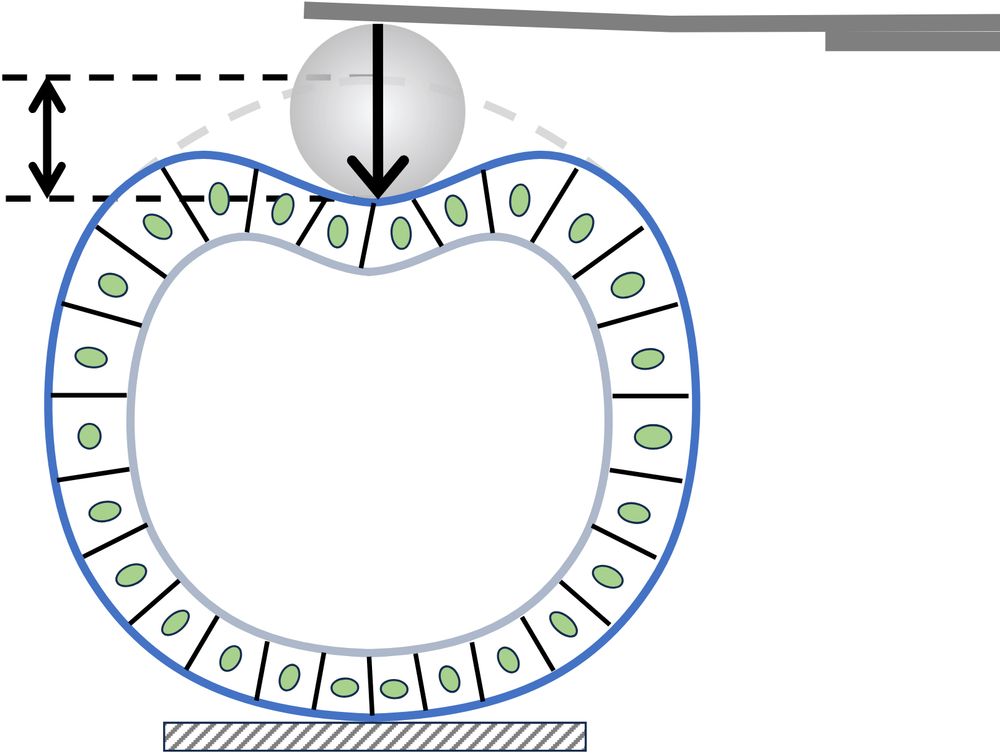
Now #published in Phys. Rev. Lett. as an Editors' Suggestion: "Mechanics of poking a cyst" - the first paper from the PhD work of @zhaoshh.bsky.social.
journals.aps.org/prl/abstract...
@mpipks.bsky.social @mpi-cbg.de @csbdresden.bsky.social
05.06.2025 15:01 — 👍 25 🔁 5 💬 2 📌 1
How do cells migrate without substrate, e.g. in embryogenesis, when extra-cellular matrix has not yet formed?
Check out our paper in @cp-cellreports.bsky.social on zebrafish lateral mesendoderm migration, led by @stetavano.bsky.social @heisenbergcplab.bsky.social!
www.cell.com/cell-reports...
14.03.2025 12:16 — 👍 25 🔁 4 💬 1 📌 0
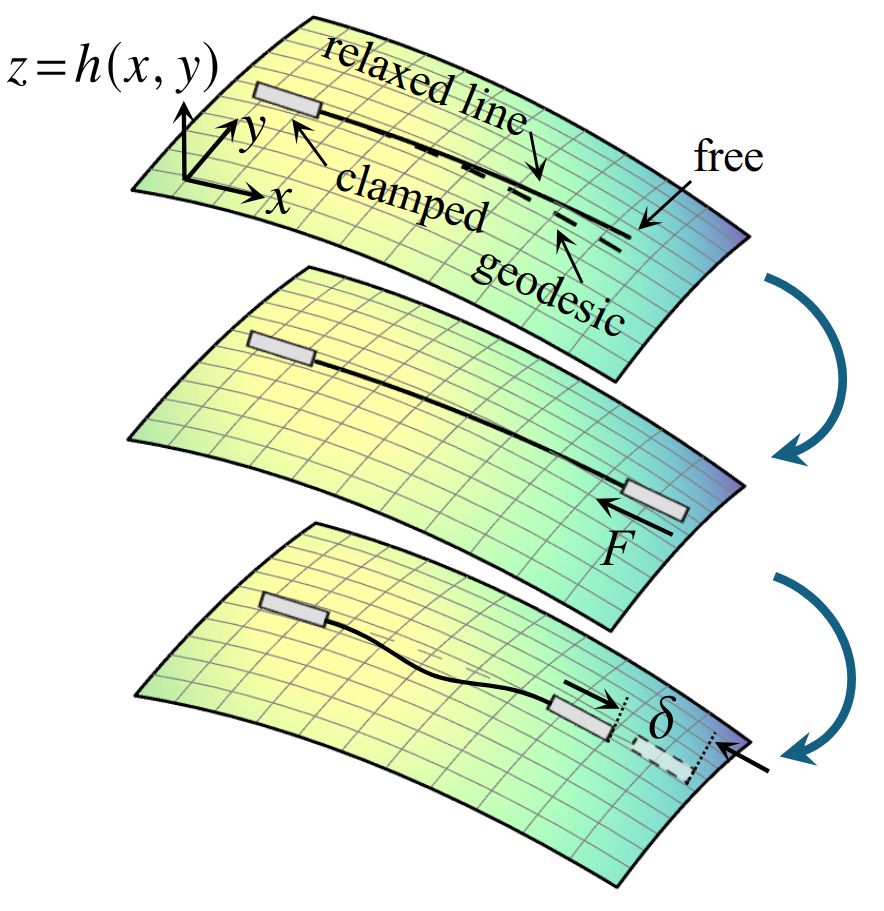
New #preprint: "Euler buckling on curved surfaces" arxiv.org/abs/2503.04303
@zhaoshh.bsky.social and I ask the question that Euler left open: How does an elastic line buckle within a (general) curved surface?
@mpipks.bsky.social @mpi-cbg.de @csbdresden.bsky.social
07.03.2025 08:38 — 👍 30 🔁 6 💬 2 📌 1
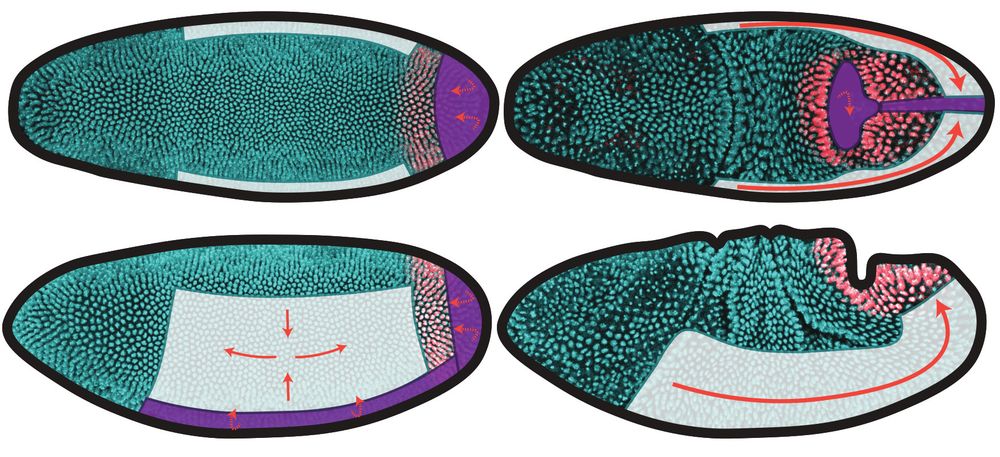
New #preprint: "A model for boundary-driven tissue morphogenesis" arxiv.org/abs/2503.03688.
A great collaboration with @danielalber.bsky.social @zhaoshh.bsky.social, Alexandre Jacinto, Eric Wieschaus, Stas Shvartsman.
@flatironinstitute.org @mpipks.bsky.social @mpi-cbg.de @csbdresden.bsky.social
06.03.2025 09:51 — 👍 56 🔁 16 💬 1 📌 3
Developmental systems have regions that deform actively or passively from their active neighbors. We use a ring of tissue as a model to investigate this boundary-driven morphogenesis in its biological context, learning something about gastrulation and possibly blastopore geometries in the process!
06.03.2025 14:12 — 👍 12 🔁 2 💬 0 📌 0
A duo of preprints on the dynamics of the first cell fate decision in mouse by Madeleine Chalifoux (first grad student in the lab!) and Maria Avdeeva (Flatiron).
We use quantitative live imaging of key cell fate determinants to follow the segregation of inner cell mass and trophectoderm lineages.
05.03.2025 02:54 — 👍 26 🔁 11 💬 1 📌 0
grad student @ penn bioengineering
a few things i do - be&dev bioðics education🧫👩🏻🔬🥚🌳🔬👩🏫
From embryos to equations and back.
We study how physical principles shape life, from collective DNA–protein interactions to mesoscale processes within cells and tissues.
Tweets by Grill Lab members.
https://grill-lab.org
PhD student at Bugaj Lab UPenn | synbio | protein engineering | optogenetics | thermogenetics | systems bio | love weird dynamics, information flow, networks | BcLOV4 renovator | looking for postdoc positions
Professor of Genetics and Pediatrics, UPenn/CHOP🧬. https://orcid.org/0000-0003-2025-5302. Views my own. 🏴🇺🇸
Physician-scientist, husband and father, amateur singer, Philadelphia sports fan
Worms, Tubes, Matrix. In Philly
#Celegans #aECM
Editor at GENETICS
Scientist, Associate Professor, Department of Genetics, Perelman School of Medicine, University of Pennsylvania, Children’s Hospital of Philadelphia
Functional genomics, Proteostasis, Neurodegeneration
www.shalemlab.org
Just another LLM. Tweets do not necessarily reflect the views of people in my lab or even my own views last week. http://rajlab.seas.upenn.edu https://rajlaboratory.blogspot.com
Boricua 🇵🇷 physician neuroscientist; Mom,
Peds Neurogenetics 🧠🧬 @CHOP/UPenn, mitochondriac, my lab works on mechanisms of pediatric neurodegeneration
#raredisease #TBCK
https://www.med.upenn.edu/oglab/
opinion = my own
Neuroscientist and geneticist @PennGenetics and @PennMedicine. Our lab studies plasticity of neuronal circuits and behavior in C. elegans. www.mphartlab.com
Solving immunologic mysteries at UPenn and CHOP since 2015
www.romberglab.org
Computational and statistical genetics. Excited about all things science. Professor of genetics at UPenn. Views my own.
https://www.med.upenn.edu/bogdan-group/
assistant professor @upenn in population genetics of cardiometabolic traits https://vujkoviclab.com/
I can think, I can wait, I can fast.
Pediatric clinical geneticist and AI researcher at Children’s Hospital of Philadelphia and the University of Pennsylvania. My lab trains large language models to improve the care of children, particularly those with rare genetic diseases.
Associate Professor of Genetics, University of Pennsylvania. Genomics of development, gene regulation, C. elegans.
Father, scientist, tech geek
🧬 Physician Scientist, Adult Medicine-Trained Clinical Geneticist, and Cilium Enthusiast at the University of Pennsylvania. 🧬
www.drivaslab.org
#childneurologist #physicianscientist, interested in neuroepigenetics of developmental brain injury and fetal neurology, #UPenn & #CHOP faculty. views = own















